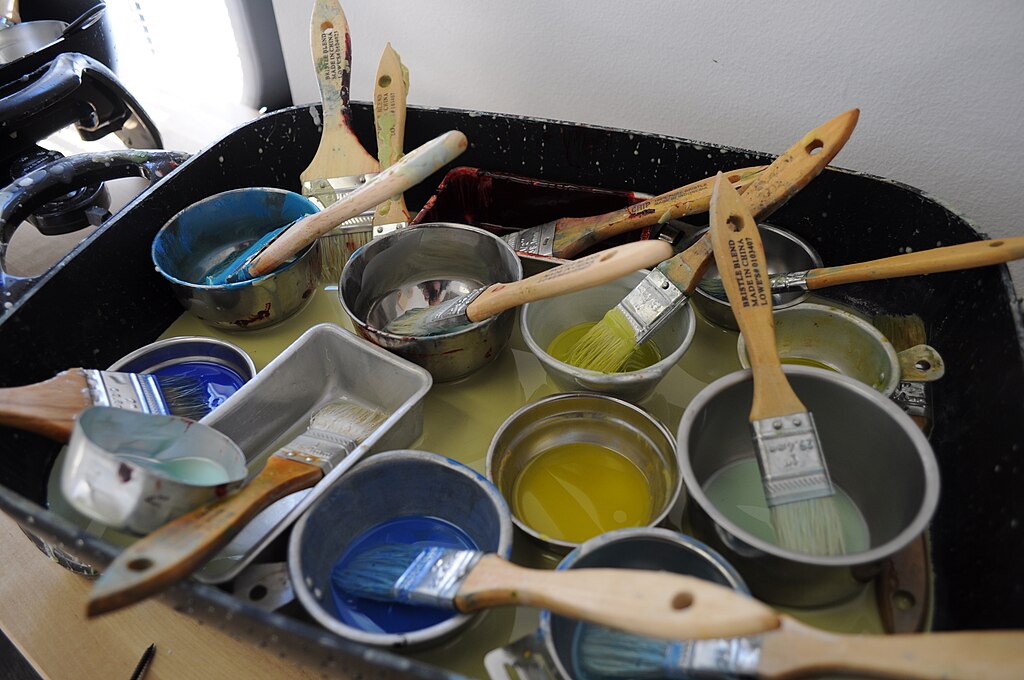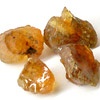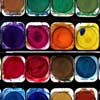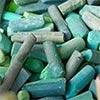The encaustic technique has the beeswax as binder. The name of encaustic (enkaustikos = engrave with fire) it comes from the ancient Greece, but the Egyptian civilization also used this technique in the sarcophagus.
The classic technique of encaustic only with wax must be worked in a hot temperature, because the wax becomes hard when it’s cold. So, you can work well with brushes, the paint stays brighter and we can extend it in a uniform way. Cold / warm you can also work with Palette knives.

The classic encaustic technique recipe :
The recipe that I share here, also has dammar resin, which adds shine to the painting, it makes the wax hardest and most scratch resistant.
- 8 parts of Dammar varnish.
- 3 parts beeswax dissolved in turpentine.
Example: 250g of Dammar varnish and 90g of beeswax. Cada parte o porción puede tener los gramos que quieras, según la cantidad que desees hacer.
Procedure for making your encaustic paintings
Dammar varnish is made with the stones of the dammar resin (Pinales trees). This resin is ground or beaten to reduce them to a powder. We put five parts of this powder inside a glass pot and we cover it adding four parts of turpentine. We put the pot unlocked in a dipper with water and we put it to heat. This way, it’s dissolved in a water bath, so that the temperatures are mild. The water in the dipper should not boil.
As the Dammar resin, we the wax also works in a water bath. Wax (usually sold in thin slabs) is broken into pieces and pressed gently into the pot. It only covers turpentine. Upon heating the glass jar, the wax quickly dissolves.
Once the Dammar varnish and the wax are dissolved, we mix it inside a glass pot. The mix will have the proportions: 8 parts of Dammar + 3 parts of wax.
If the mix is too thick as shoe glue, it needs more varnish. If it’s like candy, we need more wax. It must be like honey.
Also the painter can modify these proportions according to their interests, however, too much Dammar makes the paint most unstable and brittle and with too much wax the mix becomes cold and harder to work.
This recipe is an encaustic painting between wax and oil. This mix allows us to paint with more time because the paint takes time to dry and it has the easiness of oil.
I learn this recipe in art school and I often have done it. The paint doesn’t crack, it adheres well, you can work with the encaustic already cold and when the painting is dry the result is very strong and bright.
But as disadvantages of this painting we have the inconvenience of having to mix the dough encaustic (mix recipe) with the pigments colors each time, adding also turpentine that has a very strong odor.
To paint with encaustic we should use strong brushes, the toughest, because the paint is very rough and palette knives.
You can paint directly into fabrics prepared with gesso or paint mixture, and also into wooden boards.
Wax paintings
The wax paintings are worked with heat and turpentine. When we want to paint a canvas entirely with refined wax, we must work with heat. Once the wax painting is dry texture, it acquires a matte finish and it’s very beautiful.
Wax sticks
Elaboration of the colored wax sticks.
- 1 part of beeswax
- 1 part of Colophony rosin powder.
The Colophony rosin comes from the coniferous trees (pine resin, for example). View on Wikipedia:
https://en.wikipedia.org/wiki/Rosin
The pigments are mixed with a palette knife on a hot tray. We make the shape of a roller with a thickness of 1 cm. We let dry in a fresh and dry place.
En este libro podéis ver la misma receta: Técnicas y secretos en Dibujo – Pintura y Restauración
<!–About the colors pigments you can see:
https://www.pinturayartistas.com/colores-y-pigmentos-profesionales/–>




